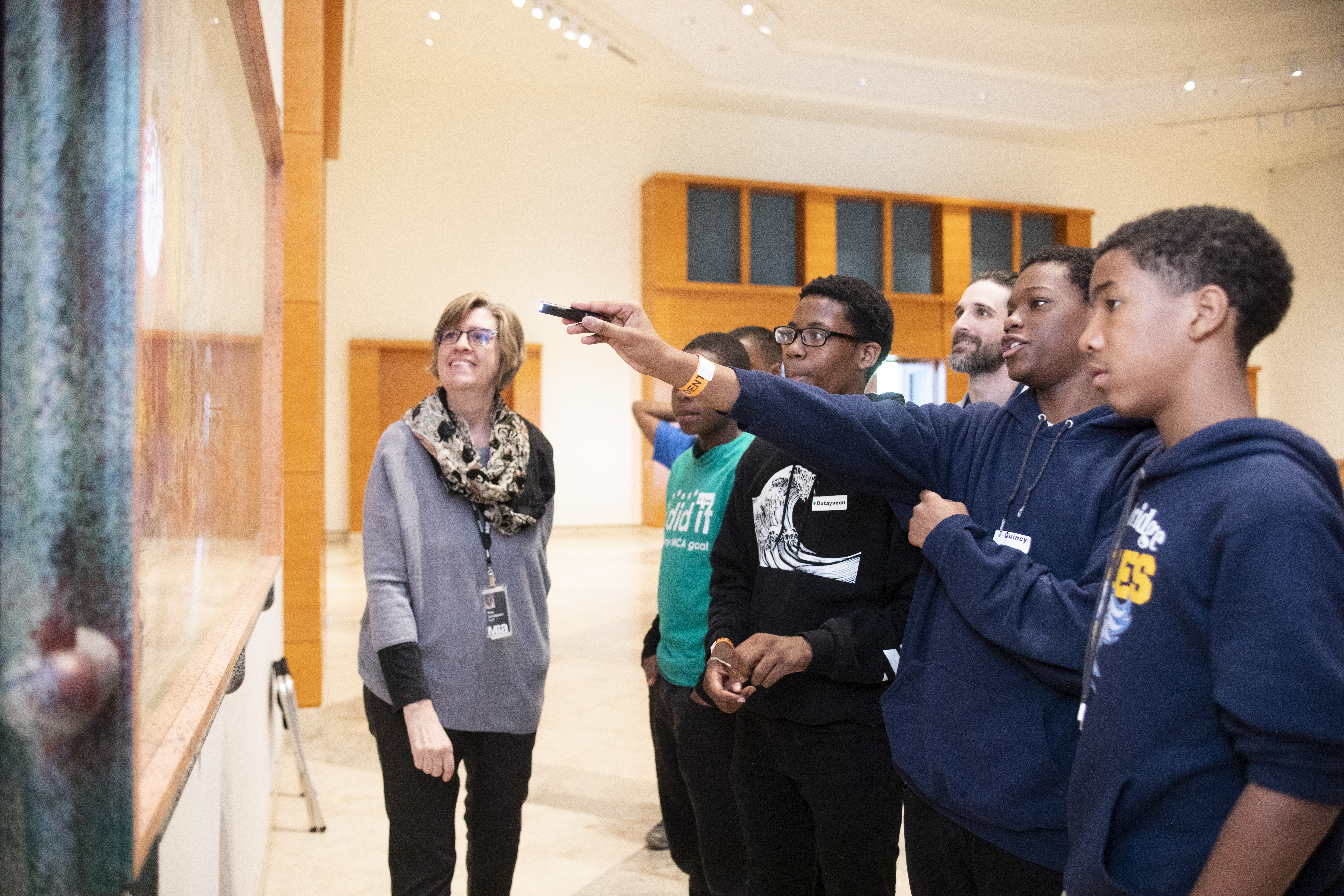Balance information and inquiry
Most often, information is best given after visitors have been allowed time to observe and discuss the work of art. You will be surprised at how much visitors will be able to tell you about artworks and cultures by what they observe. Children are more likely to learn if they have invested their own time, energy, and thoughts in the discussion. However, if an artwork is open to cultural misinterpretation, introduce some relevant information at the beginning of the discussion. For example, to avoid misinterpretation, you might begin a discussion of the Kongo Power Figure with, “This nail figure is valued for the good power it brings to the community. What about this figure looks powerful to you?”
By balancing inquiry and information based on the group’s interest and observations, you continually challenge deeper looking and meaning.
